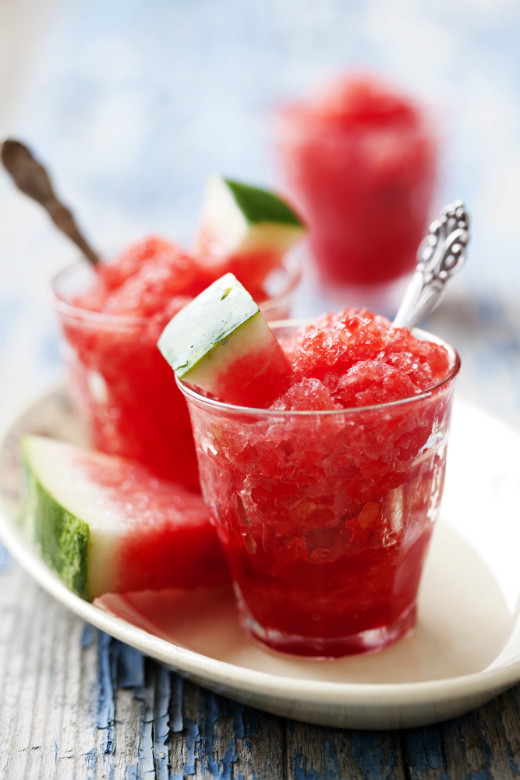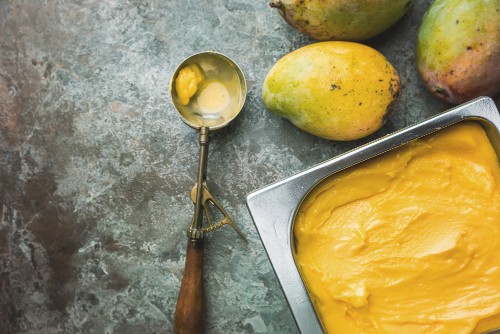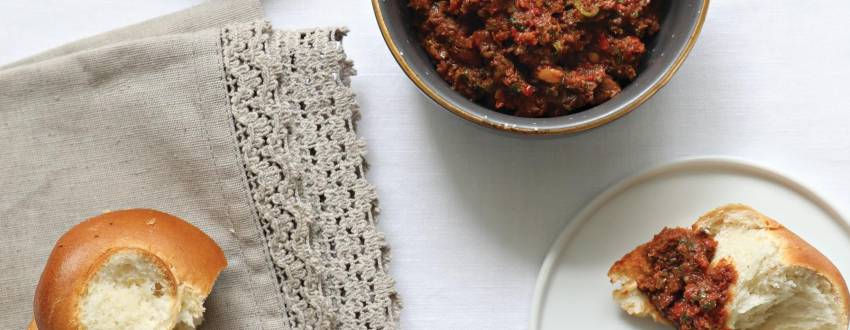By: Mussy Raitman, Lubicom Staff
I think we all feel the Pesach restrictions that little bit more when it comes to crafting the dessert menu. If you’re serving different flavored sorbets every day (absolutely no judgment), the least you could do is get it perfectly right.
Just like everything these days, sorbet has a science. Once you learn these key pointers, trust me you’ll be ready to turn any fruit into fresh, flavorful, creamy sorbet any time of the year.
Most of the time, making sorbet is tricky, either it tastes way too sugary, freezes too icy, or melts as soon as you start scooping. It’s solely the result of having no fat and eggs that would typically hold ice cream together.
Sorbet is usually made with fruit and is usually dairy and fat-free. Technically you can make a sorbet with just plain water and sugar. The critical thing to remember is that when it comes to sorbet, sugar not only acts as a sweetener but more importantly forms the sorbet’s structure.
In short, the sugar content is vital.
It’s essential to remember that when you dissolve sugar in water you get syrup with a much lower freezing point than water alone. Therefore, the sweeter the syrup is, the lower the freezing point becomes.
Generally, the rule you can keep is four cups of fruit purée to one cup of sugar.

Pay attention to how sweet your fruit is naturally. In general, sweeter fruits require less sugar. If you don’t know the exact sugar content of your fruit, the best thing you can do is play it safe. The ideal amount of sugar concentration is between twenty to thirty percent. This will produce a fantastic creamy sorbet. If you add less, your sorbet will end up too icy, and if you add more, it may not freeze. Within the (20%- 30%) window you have some room for trial and error, especially with high-pectin or -fiber fruit like berries and stone fruit, which add that element of thickness.
Other than getting the sugar rule down pat, you’ll have yourself amazing sorbet if you use amazing fruit. The golden rule of great sorbet starts with good fruit. This means picking the most aromatic watermelon and the juiciest plums you can buy. Fruit very high in pectin (stone fruit, grapes, and berries) or fiber (bananas, pears, and mangoes) are thick and make for an exceptionally creamy sorbet. Pectin and fiber act as thickeners; their starchiness gets in the way of growing ice crystals.
In contrast, pomegranate juices and watermelon are thin with no thickness. These fruits need more attention to make sure their texture is creamy like with berry sorbet. It’s even trickier to master citrus-based sorbets like lemon, lime, and grapefruit; not only does their liquid lack the necessary pectin or fiber, they can be so tart that extra sugar is needed to stabilize the flavor.

Once your sorbet is ready, the trick is to keep it as cold as possible. Yes, I’m referring to that tiny space in the back and bottom of your freezer with everything else piled on top of it. Purchase airtight containers to protect your hard work from any sort of freezer burn or funky smells.
But most importantly, eat your sorbet fast… we are dealing with fresh fruit, and we all know fresh fruit doesn’t last forever.
If any issues come up along the way, don’t be scared to play around with it. Let it sit on the kitchen counter until it melts and then figure out what’s missing.
Too icy? Add more sugar.
Too sweet? Add more lemon or lime.
If absolutely nothing seems to fix it and you start doubting your sorbet making skills… just throw it into a blender and add some alcohol. You earned it. Sip on that boozy slush while you stare from afar at that daunting Pesach to-do list that just never seems to get shorter.





